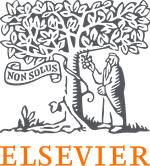Social media, social networks and the communication of Architectural Heritage.
DOI:
https://doi.org/10.29105/contexto16.25-344Keywords:
social media, architectural heritage, architecture platformsAbstract
The correct understanding of the architectural heritage is key to its proper conservation. Social media and social networks play a major role, at a global level, in their knowledge and diffusion. They provide utilities that generate interactive content and reach a very large population. However, on occasions, their commercial interests alter the socio-cultural reality of this architectural heritage, by incorporating various circumstances that affect its correct communication. This article reviews, in a general way, the keys to this consideration in the diffusion of this heritage.
Downloads
References
Alberich-Pascual, J. y Higueras-Ruiz, M. (2021), “Estrategias de interacción y comunicación de showrunners de series de ficción televisiva de Netflix en Twitter”. Comunicación y Sociedad, Scielo, Vol. 18. DOI: https://doi.org/10.32870/cys.v2021.7772.
Arroyo Vázquez, N. (2007), “¿Web 2.0? ¿web social? ¿qué es eso?”. Educación y Biblioteca, Vol. 161, pp. 69-74. http://eprints.rclis.org/10566/. [20 de marzo de de 2022].
Carone, G., (2022), “WikiArquitectura”, www.wikiarquitectura.com [15 de diciembre de 2020].
Cimadomo, G., García, R., Shahdadpuri, V. (2021), “La diseminación de la arquitectura en la era digital.
El ecosistema de las revistas (digitales), repositorios y redes sociales”. Constelaciones. Revista De Arquitectura De La Universidad CEU San Pablo, núm 9, pp. 157–173. DOI: https://doi.org/10.31921/constelaciones.n9a10
Cimadomo, G., García, R.; Shahdadpuri, V. (2018), “Towards a (new) Architectural History for a Digital Age. Archdaily as a dissemination tool for architectural knowledge”. Criticall III International Conference on Architectural Design & Criticism. Universidad Politécnica de Madrid, Madrid, pp. 64-73. https://hdl.handle.net/10630/15589
Crysler, C.G., Cairns, S., Heynen, H. (2012), The Sage Handbook of Architectural Theory. Londres, SAGE Publications. DOI: https://dx.doi.org/10.4135/9781446201756
Economou, M. (2015), “Heritage in the Digital Age”, A Companion to Heritage Studies, Logan, W, Craith,
M. N. y Kockel, U. (eds). Nueva Jersey, John Wiley & Sons Inc., pp. 215-228. DOI: https://doi.org/10.1002/9781118486634.ch15
Eiler-Rasmussen, S. (2020), La experiencia de la arquitectura: sobre la percepción de nuestro entorno.Madrid, Editorial Reverte.
Escandón Montenegro, P. (2019), “Patrimonio de interfaz mutante. Narrativa y difusión del patrimonio ecuatoriano en las redes sociales”. Hipertext.net, núm. 18, pp. 56-65. DOI: https://doi.org/10.31009/hipertext.net.2019.i18.06
Canal Youtube (2019), “Data Is Beautiful” [21 de abril de 2022]:https://www.youtube.com/channel/UCkWbqlDAyJh2n8DN5X6NZyg.
Domo (2022), “Data Never Sleeps”. Vol. 9. California, Domo Inc., [20 de abril de 2022] https://www.domo.com/learn/infographic/data-never-sleeps-9
Hootsuite (2021), “Digital 2021: the latest insights into the “state of digital”. We are social Ltd. England.
Cimadomo, G. y Fernández Per, A. (2011), “Escribir arquitectura: pautas y criterios” (entrevista inédita). Fundación General de la Universidad de Málaga.
Farahani, L., Mahmoudi, M. y Maedeh, G. (2018), “Investigating heritage through the lens of social media”. Journal of architcture and Urbanism, Vol. 42, núm. 2, pp. 199-211. DOI: https://doi.org/10.3846/jau.2018.7057.
Instituto Internet (2020), “IA y las redes sociales”. [20 de marzo de 2022], https://www.institutointernet.com/blog/ia-rrss/
Lucca, R. (2020), “Las redes sociales con más usuarios”, DXmedia, [20 de marzo de de 2022], https://dxmedia.net/redes-sociales-usuarios-2020/
Márquez Espino, E. (2010), “Modelos de negocio de las redes sociales”, [20 de marzo de de 2022], http://emiliomarquez.com/2010/05/13/modelos-negocio-redes-sociales/
Maas, W., Madrazo, F.; Hulsman, B. (2017), Copy Paste - The badass Architectural Copy Guide. Amsterdam, Nai010 Publishers.
Mosciatti, E. (2010). “Redes sociales y patrimonio cultural”. Mensaje, Vol. 59, núm. 590, pp. 41-45.
Pérez Salazar, G. (2011), “La Web 2.0 y la sociedad de la información”. Revista mexicana de ciencias políticas y sociales, Vol. 56, núm. 212. http://www.scielo.org.mx/scielo.php?script=sci_arttext&pid=S0185-19182011000200004
Orlowski, J. (2020), “The social dilema”. EEUU, Exposure Labs.
Quezada, L., Salcedo, F., Alvarado, M., y Lindao, J. (2018), “Redes 2.0, narrativa transmedia y patrimonio cultural para el desarrollo social”. II Congreso Internacional de Tecnologías para el Desarrollo, Vol. 2, núm. 1, Universidad Técnica de Machala, Ecuador. https://investigacion.utmachala.edu.ec/proceedings/index.php/utmach/article/view/298
Shaw, A. y Krug, H. (2015), “Heritage Meets Social Media: Designing a Virtual Museum Space for Young People”. Journal of Museum Education, Vol. 38, núm. 2, pp. 239-252. DOI: https://doi.org/10.1080/10598650.2013.11510774
Smith, C. (2015), “Social media and the destruction of world heritage as global propaganda: inaugural lecture”. Actas del II Congreso Internacional en Buenas Prácticas en Patrimonio Mundial: Personas y Comunidades, Universidad Complutense, Madrid, pp. 27-49, http://eprints.ucm.es/35077/1/Conferenciainaugural.pdf
Trujillo, J. L., López-Tarruella, J., Llinares, C. e Iñarra, S. (2017), “El espacio digital: comparativa de las últimas técnicas de visualización arquitectónica”, EGA Expresión Gráfica Arquitectónica, Vol. 22, núm. 31: pp. 102-111. DOI: https://doi.org/10.4995/ega.2017.4234
Vergara-Muñoz, J. y Martínez-Monedero, M. (2021), “Arquitectura, fotografía y redes sociales”, Revista PH, Vol. 102, pp. 174-176. DOI: https://doi.org/10.33349/2021.102.4812
Vianello, M. (2004), El hipertexto entre la utopía y la aplicación: identidad, problemática y tendencias de la Web. Gijón, TREA.
Zhou, L. y Wang, T. (2014), “Social media: A new vehicle for city marketing in China”, Cities, núm. 37, pp. 27-32. DOI: https://doi.org/10.1016/j.cities.2013.11.00
Downloads
Published
Versions
- 2023-01-03 (3)
- 2022-12-22 (2)
- 2022-12-22 (1)
How to Cite
Issue
Section
License
Copyright (c) 2022 Miguel, Jaime

This work is licensed under a Creative Commons Attribution-NonCommercial 4.0 International License.
The authors who publish in this journal accept the following conditions:
1. The authors keep the copyright and give the journal the right of the first publication, with their content registered under the Creative Commons License, which lets third parties to use the published material as long as they mention the authors and the first publication from the journal.
2. The authors can make other independent and additional contractual agreements for the non-exclusive distribution of the version of the article published in the journal (for example an institutional repository or a book) provided that they explicitly mention that the content was first published in CONTEXTO. Revista de la Facultad de Arquitectura de la Universidad Autónoma de Nuevo León..














.png)





